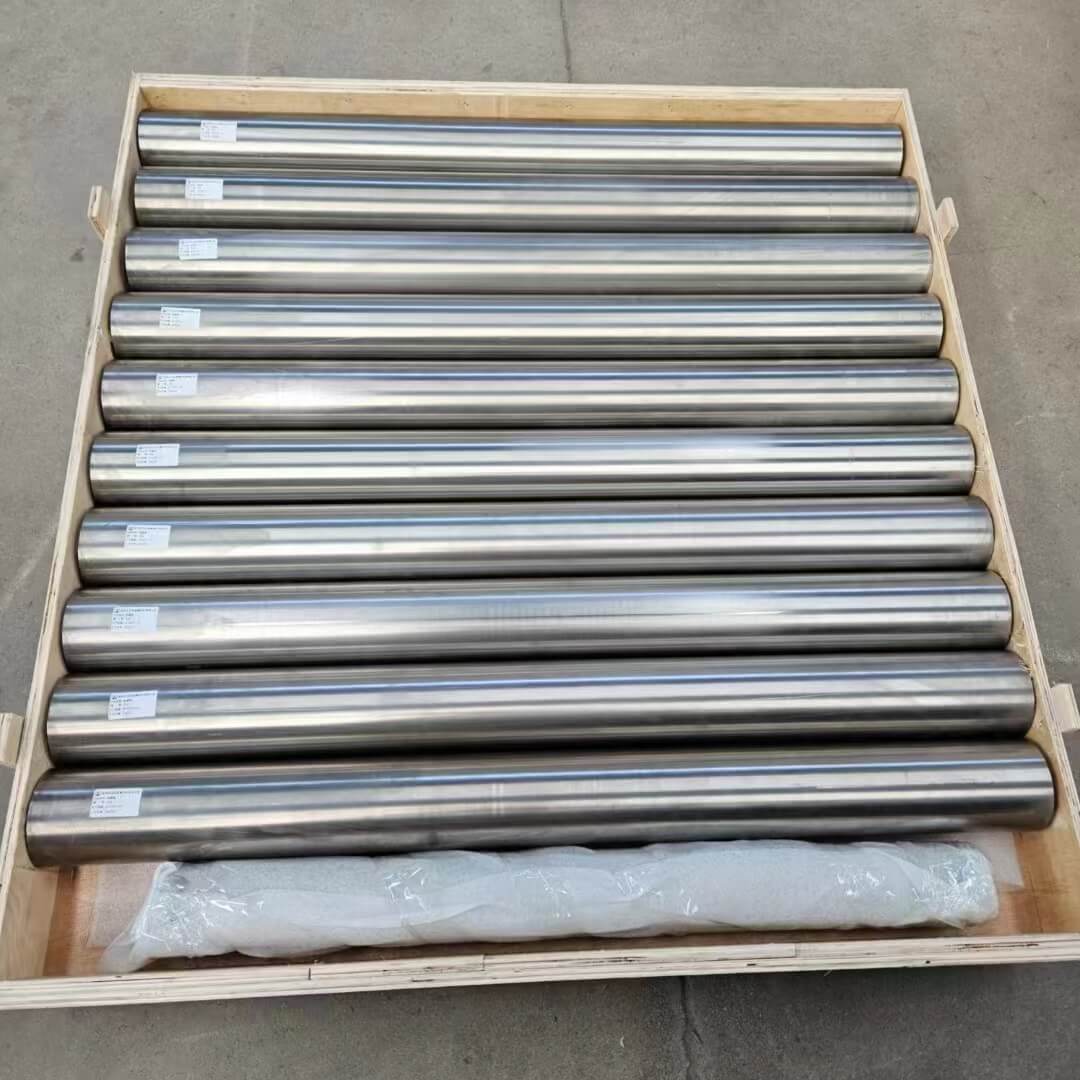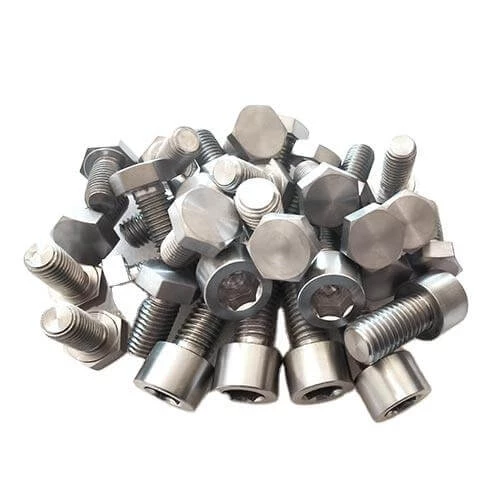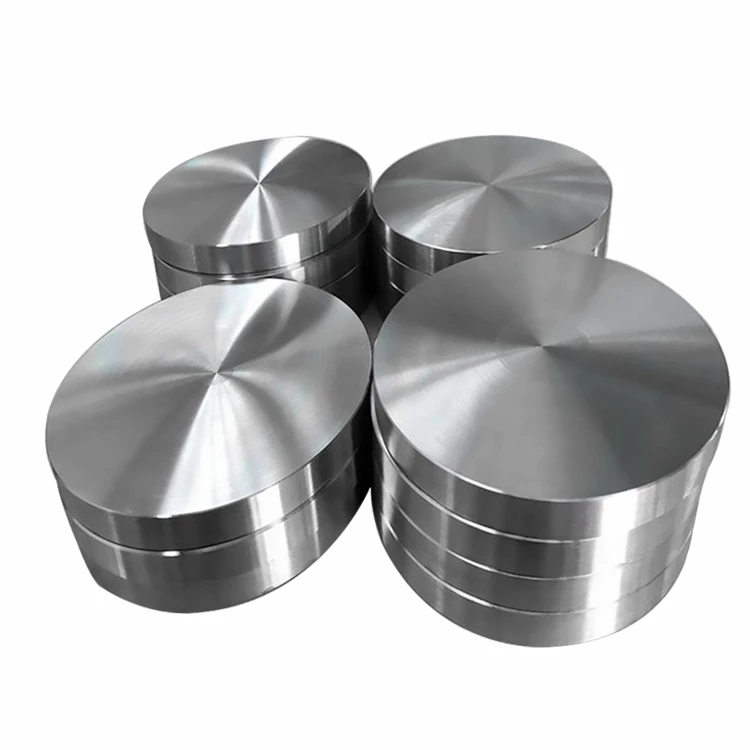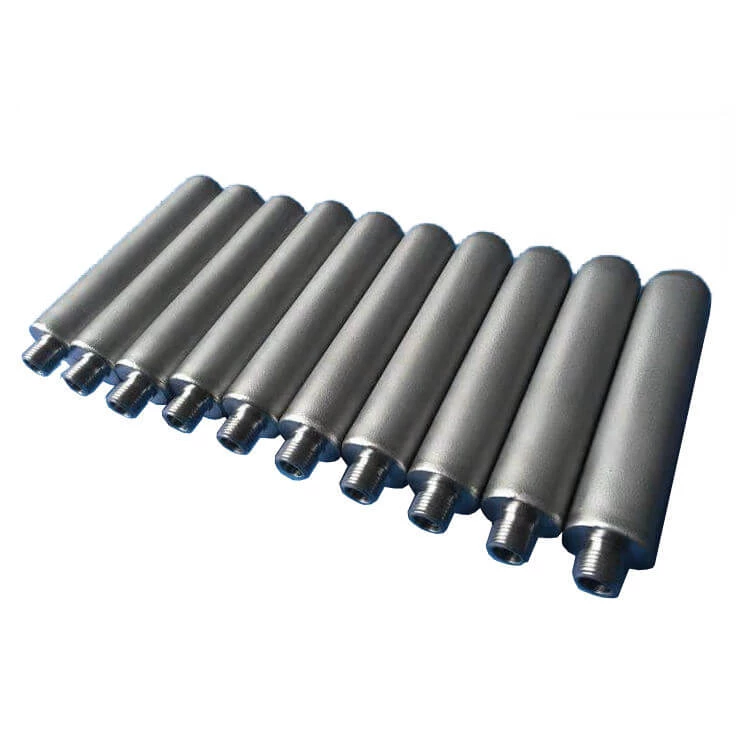C103 niobium-hafnium alloy
Specifications: Dia50*600mm
Quantity: 10 pieces

C103 niobium hafnium alloys (niobiumHafnium alloys)
A niobium alloy formed by adding a certain amount of niobium and other elements based on niobium. On the binary phase diagram, niobium and β-Hf form a substitutional solid solution. Hafnium is an active element that combines with oxygen and carbon in niobium to form HfO2 and HfC compounds, which play a role in dispersion strengthening, reduce the harmful effects of interstitial elements, and improve the weldability and coating properties of niobium alloys. Niobium-hafnium alloy is the most widely used niobium alloy in aerospace engineering and technology.
Niobium and hafnium alloys are classified according to strengthening methods: solid solution strengthening alloys, alloys combining solid solution strengthening and dispersion strengthening.
Niobium-hafnium alloy has high temperature strength,
It is used as a refractory material in the industry, has a high temperature strength above 1300°C and is easy to coat for oxidation resistance. It is the main structural material of the thrust chamber of the orbit attitude control liquid rocket engine, but it is prone to oxidation and "powdering" in the working environment. It must be coated with a high-temperature anti-oxidation coating on the alloy surface. The oxidation life of the coating at 1700 ° C is 7h. The number of air-cooled thermal shock cycles at 1400~80O℃ is 4700 times, and the surface roughness is 30-60um.
Product Name: Niobium and Hafnium Alloy, Niobium and Hafnium Rod, Niobium and Hafnium Plate, Niobium and Hafnium Alloy Rod
Niobium-Hf alloy grade: Nb-Hf10-1 C-103
Niobium-hafnium alloy rod executive standard: GB/T14842-2007
Density: ≥8.57g/cm3
Foreign brand: C-103
Standard: Comply with YS/T656-2007, GB/T14842-2007
Process flow: smelting-forging-inspection-polishing-vacuum annealing-inspection-packaging.
The preparation method and processing technology include ingot preparation and plastic processing, welding, heat treatment and coating.
Ingot preparation and plastic processing Niobium-hafnium alloys are usually prepared by a combination of electron beam melting and vacuum arc melting, and then extruded or forged at a temperature above 1200°C. Rolling and drawing are carried out at a certain temperature, and products such as plates, strips, rods, wires and forgings can be made.
Welding Niobium-hafnium alloys have good weldability. Usually, argon tungsten shielded welding and electron beam welding are used to realize the connection of parent metals. These two welding methods can also be used to complete the welding of niobium-hafnium alloys withtitanium.html> titanium and titanium alloys. The quality of the weld seam is related to the purity of the argon gas and the degree of vacuum. Generally, the higher the purity of the argon gas and the lower the residual atmospheric pressure, the better the quality of the weld seam.
Heat treatment generally adopts vacuum or inert gas protection annealing treatment and solution aging treatment.
Coating usually adopts Cr-Ti-Si and Cr-Fe-Si series anti-oxidation coating. The niobium-hafnium alloy coated with these two coatings has an anti-oxidation life of more than 150h in the air at 1371°C.
Uses Mainly used for radiation cooling nozzle extensions and thrust chamber body of liquid rocket engines, molten sodium and sodium potassium alloy pressure tubes and turbo pumps for space power generation systems, high temperature structural components of jet engines, etc.







